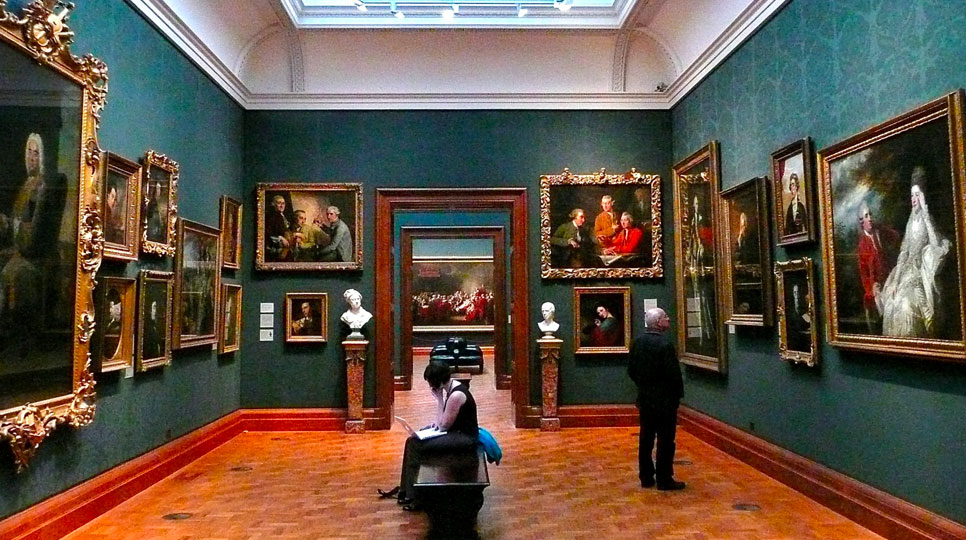
Tuesday August 19, 2014
Art Gallery Etiquette London
The National Gallery, the jewel in the crown of London’s world leading Art scene has recently announced that it will be revoking its ban on visitors using camera phone photography inside the gallery. The gallery’s decision is one that was born out of pragmatism, as its staff were finding it increasingly difficult to enforce the ban in a space in which visitors are encouraged to interact with the gallery on social media. This, however, has not prevented the decision from stirring up a considerate amount of controversy in the art world, with art traditionalists fearing that the lifting of the ban will encourage an unwelcome wave of selfies across the National Gallery.
The prevailing argument of those against the use of camera phone photography in art galleries is that photographing art, and specifically the practice of taking selfies in front of artworks, is an inappropriate way in which to conduct oneself around artwork. Many feel that taking selfies in front of artworks will devalue the pieces in some way and indeed, this is not a view without merit. When one takes a selfie with an artwork, the selfie taker becomes the subject of the photograph, with the actual piece of art work in question becoming ancillary, something I am sure Claude Monet did not intend when he painted ‘The Water Lily Pond’.
As a public relations agency with considerable experience and expertise in arts and culture, this debate was something that has been of particular interest in the Curzon PR office. As well as creating debate within our office, the news has also sparked a wider discussion about the topic of conduct and etiquette in art galleries. Should art galleries remain spaces in which certain conventions are upheld with regards to proper conduct? Or should we allow them to be spaces in which people are free to enjoy the art in whichever way they please?
The traditionalist would argue that etiquette in art galleries exists for a reason and in most cases adhering to conventional etiquette can be helpful in allowing people (as well as their fellow guests) to fully appreciate the artwork on display. On the other hand, adhering to strict standards of conduct in art galleries could have the effect of alienating certain groups of people from art galleries. Camera phone photography provides a particularly good example. For the younger generation, taking photographs of memorable experiences with their phones is incredibly common and galleries that allow their visitors to take camera phone photographs can be seen as positively engaging with a demographic that they should be encouraging to be become more passionate about the arts.
At Curzon PR, we have worked with several clients who have challenged the traditional art gallery formats; from Heist, a fine art photography collective who pride themselves on being an ‘anti-gallery’, to Gallery Elena Elena Shchukina, who have taken a new approach to the gallery space by holding its exhibitions in a curated living space. Although, we are still enormous fans of more traditional galleries, such as the National Gallery, we feel that there are many other galleries in the capital that could benefit by taking, similar progressive approaches to their spaces.
London is a city in which its residents are incredibly fortunate to benefit from several world class art galleries and museums that are incredibly accessible to all members of the public due to their free admission. However, it is incredibly important that galleries are seen to be welcoming places to all kinds of people, whether they are regular gallery visitors or not, to ensure that as many people as possible are encouraged to experience the beautiful and enriching art that this city has to offer.
Curzon PR is a London-based PR firm working with clients globally. If you have any questions, please feel free to contact our Business Development Team bd@curzonpr.com




Follow us